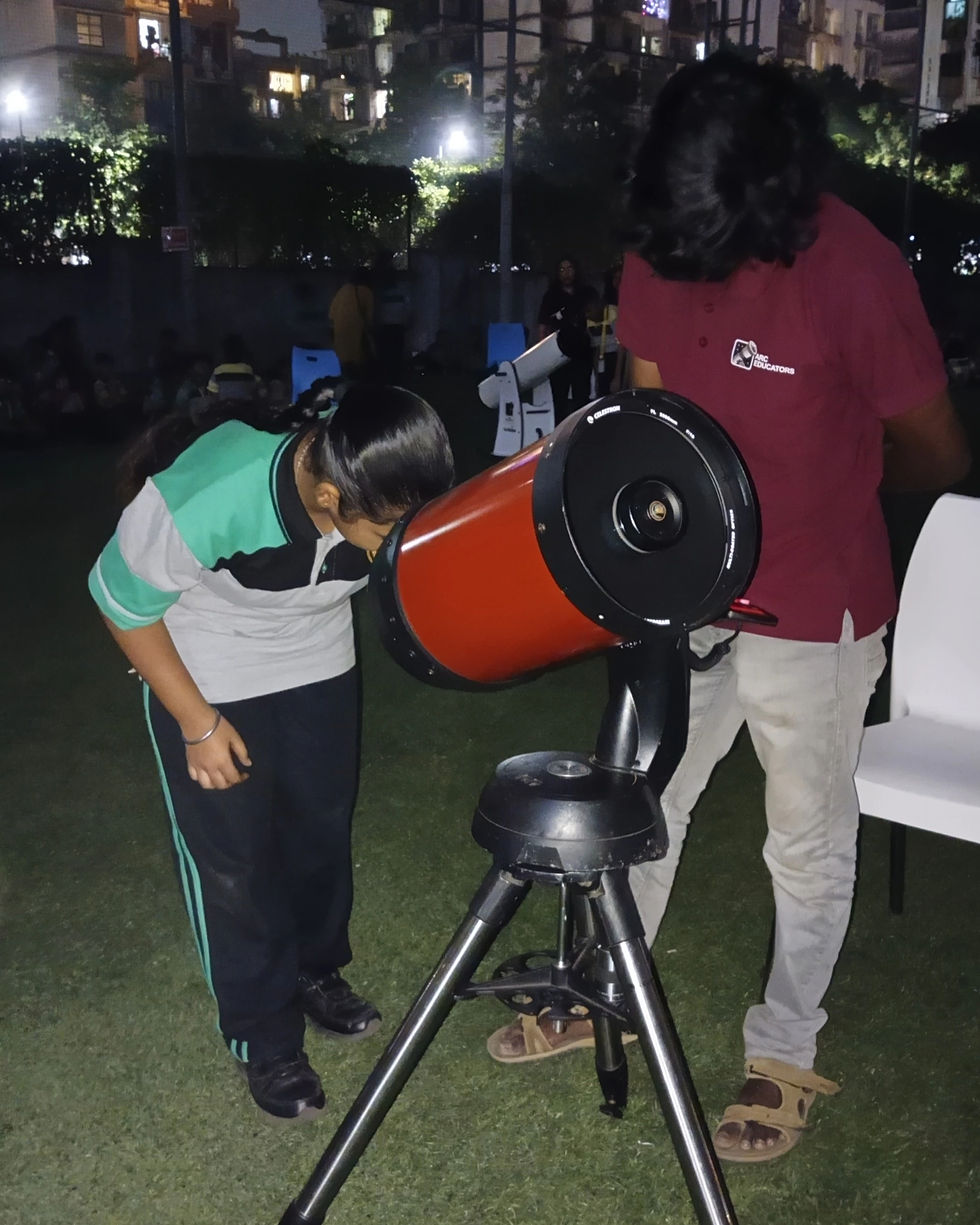Astronomy for Students: Fun and Educational Stargazing Activities
- ARC EDUCATORS
- Apr 27
- 3 min read
Learning astronomy can be incredibly exciting when you use the right activities. By engaging students with hands-on experiences, they can gain a deeper understanding of the universe. From crafting life-sized models of the solar system to observing celestial events through telescopes, astronomy captures the imagination of young minds. This blog post presents a variety of astronomy activities designed to inspire and educate students, whether in classrooms, camps, or at home.
Indoor Activities
Interactive indoor activities are among the best ways to introduce students to astronomy.
Stellarium
Stellarium is a free planetarium software that brings the night sky to life. Teachers can use Stellarium to show students stars, planets, and constellations visible from their own backyards.

Students can explore the software to identify celestial objects on any given night. For instance, they might find that Saturn appears bright and distinct in September while Orion is prominent in January. By zooming in on various stars and planets, they can learn about characteristics such as brightness and color.
Moreover, Stellarium allows users to simulate the night sky from various locations around the globe. This makes it an excellent tool for lessons on cultural astronomy, allowing students in North hemisphere to see what their peers in South Hemisphere view in the night sky.
Encouraging students to navigate Stellarium enhances their excitement about astronomy. They become active participants in their learning, grasping cosmic mechanics in an interactive way.
Constellation Crafts
Creating constellations is another enjoyable indoor activity that brings astronomy to life in the classroom. Using materials like black construction paper and glow-in-the-dark stickers, students can craft their own celestial maps.

Each student can select a constellation to research, learning its mythology and scientific significance. For example, while researching Orion, they might discover its association with hunting in Greek mythology. After conducting research, students can replicate the constellation and label information about each star, including names and distances from Earth.
These visual projects help reinforce their understanding of patterns in the night sky, making astronomy more memorable and interactive.

Through constellation crafts, students develop creativity alongside scientific knowledge, enhancing both their engagement and enjoyment of astronomy.
Outdoor Activities
Outdoor activities provide essential opportunities for students to connect more directly with astronomy.
Telescope Observation
Organizing evening telescope observations allows students to view celestial objects up close. If your school has access to telescopes, planning special stargazing nights offers students hands-on learning experiences.
During these events, students can observe planets, galaxies, and even distant nebulae. For instance, viewing Jupiter can spark excitement as they see its bands of clouds and the four largest moons, known as the Galilean moons.
Under proper guidance, students learn how to set up and focus a telescope, enhancing their confidence and skills. This shared experience fosters teamwork and a growing curiosity about the universe.

Astrocamps for Children
Another enriching outdoor activity is a skygazing astrocamp. This guided journey can take place in a local park or open area, letting students lie back and gaze up at the sky.

Teachers can lead these tours by highlighting significant constellations, stars, and planets. For example, when pointing out the Big Dipper, educators can explain its importance in navigation and cultural contexts.
Incorporating storytelling about celestial myths or notable astronomers can make the experience come alive. This emotional connection fosters wonder and appreciation for the stars around them.

Tips for Teachers
Successfully organizing astronomy activities requires thoughtful planning.
Make It Interactive: Engage students by involving them actively. Use hands-on experiments, group discussions, and opportunities for questions and curiosity.
Utilize Technology: Incorporate technology into your lessons. Tools like Stellarium create immersive experiences that help visual learners grasp complex concepts more easily.
By effectively executing these strategies, teachers can inspire a new generation of astronomy enthusiasts.
Final Thoughts
Involving students with engaging astronomy activities, indoors or outdoors, can greatly enhance their learning experience. Activities like constellation crafting and telescope observations allow students to explore the wonders of the cosmos.
With careful planning and a focus on active engagement, educators can nurture a love for astronomy in their students.
If you're looking to enhance your educational curriculum, consider scheduling a school stargazing program with us (Arc educators). Explore the universe and watch as student curiosity ignites under the starry sky. Together, let's inspire the next generation of astronomers!
🌟 So, why wait?

Give your child the opportunity to explore the stars, ignite their imagination, and embark on a journey!
Join Arc Educators for our Upcoming Camp: Young Astronomer Summer Camp 2025!
Keep following Arc Educators because here,
Mauka Bhi Hai, Dastoor Bhi Hai.










Comments